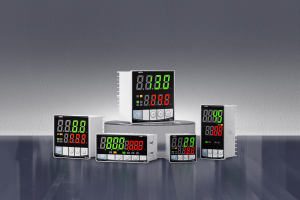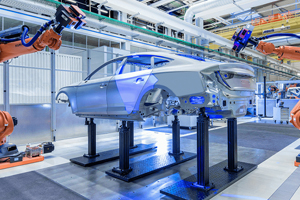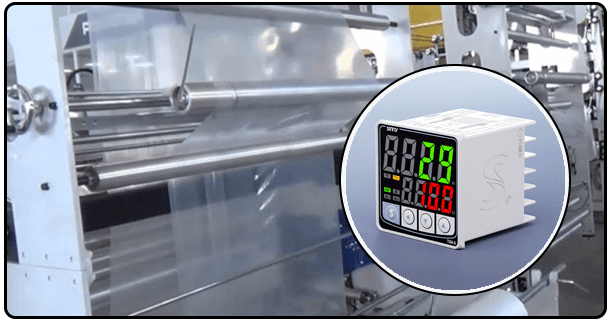PID temperature controllers explained: their features, functions, and applications
1. The following is a brief introduction to the topic:
The regulation of temperature is essential to a wide range of activities, from laboratory experiments and large industrial processes to maintaining comfortable indoor environments.
2. ?Que es un Controlador PID Temperatura?
The algorithm calculates continuously the corrective actions required to minimise the error, the difference between setpoint and measured temperature, and then applies them to the output – typically a heat exchanger, cooler or other actuator. PID is a control algorithm that integrates three different actions: proportional, integral, and derivative. The components each contribute to the accuracy and stability of temperature control.
The proportional (P) element directly addresses the size of the error. The output is changed in a proportional manner to the magnitude of error. The output signal is stronger when the error magnitude is larger, while a small error produces a weaker signal. The integral (I) is a component that focuses on the history of errors. The error is integrated over time to eliminate steady state errors. The system will not fail to achieve the target temperature. The derivative (D) predicts errors in the future based on how fast the error rate is changing.
3. El Alcance de Aplicaciones del Controlador PID Temperatura
HVAC systems (Heating Ventilation and Air Conditioning) also use PID controllers. This is especially true for zones that require very accurate temperature regulation, or more complex HVAC systems in commercial buildings. Stable temperature is essential in environmental test chambers to simulate various environments for testing and validating products.
In kitchen appliances PID controllers are used to control the temperature in high-temperature range ovens and refrigerators. This is especially true for establishments that require equipment that can operate with different voltages or requires a robust, reliable system of controls.
In Research and Development (R&D), researchers require temperature controllers that can deliver precise temperatures in different environments, allowing for various test and development protocols. This contributes significantly to the advancement of science.
4. Ventajas Clave de Utilizar un Controlador PID
PID controllers offer several advantages in particular for applications that require precise temperature control.
precision control is one of the main benefits. The PID controllers have a reputation for maintaining the temperature of the process very near the set point,
One of the key advantages is Stability. The PID controller maintains temperature with minimum fluctuations. This ensures consistent operation conditions. It is important to maintain stability in processes sensitive to temperature fluctuations, because it prevents deviations which could cause errors and inconsistent results.
Rapidity of Response also has a major benefit.
PID controllers also offer automation. When configured correctly, PID controllers can keep the temperature at the set point without manual intervention. This reduces the work load on the operators, and minimizes the risk of human error. Automation leads to greater efficiency and productivity.
5. Caracteristicas Tecnicas del Controlador PID Temperatura
The modern PID temperature controls incorporate key features which contribute to the effectiveness and versatility of these devices.
The algorithm forms the basis of a PID controller. The majority of PID controllers allow users to adjust the P, I and D gain, which allows them to optimize their control actions. autotuning is available on some advanced models, which simplifies the set-up process.
Most controllers support a variety of sensors. The most common choices are thermocouples, (e.g. J, K. T. E. R. S. B.) and resistance temperature detectors, (e.g. PT100. PT1000). The temperature range of an application and the environment it is in will determine the type of sensor to use. RTDs are more accurate and can be used in a smaller temperature range.
Another important specification is the range of temperature which a controller will handle. There are controllers that can handle a range of temperatures from cryogenic applications up to industrial high temperature processes.
Controllers provide various entradas y salidas options. The temperature sensor is usually connected to inputs. The output includes relay contacts to switch power to resistive load or contactors to handle larger loads. Solid State Relays can be used for smoother control and analog outputs such as 0-10V, 4-20mA or SSRs.
interface of the user also plays a major role. Modern controllers have a digital display with a simple menu system and clear LCD. Operators can easily adjust the temperature target, check current conditions, see error messages and make adjustments with little training.
Some controllers are equipped with protocols that can be integrated into larger systems. For instance, RS485 Modbus RTU/ASCII protocol allows controllers to communicate with devices such as data loggers or PLCs.
Seguridad should be a final consideration. Sometimes, controllers include essential safety features. They may also include high-low limit switches, overheating alarms (which will shut off the output when temperatures are above or below safe limits), and rugged enclosures to protect users and internal components from electrical hazards. Some controllers feature certificates, including CE (Conformite Europeenne), UL (Underwriters Laboratory) listing for North America or IECEx (International Electrical Code) certification, which indicate compliance with performance and safety standards.
6. Seleccion del Controlador PID Temperatura: Criterios Clave
It is important to choose the correct PID controller for your application in order to achieve optimal performance and compatibility. When evaluating the product, it is important to consider several key aspects.
Firstly, definir los requisitos of your application is essential. It is important to identify the type of process (heating, cooling), temperature range required, nature of load (resistive, inductive or capacitive), as well whether it involves continuous operation, intermittent operation, cycling, etc.
Next, verificar los voltajes is important. Verify the voltage range your application is going to use. Although these controllers can be used in a variety of voltage ranges, it is important to verify compatibility. Consider the frequency of power (50Hz or 60%Hz) as well, although many are compatible with both.
The sensor type also plays an important role. Choose the right type of sensor for your application and its temperature range. The most common choices are thermocouples of all types (J,K,T,E,etc.). RTDs, such as PT100 and PT1000 (Resistance temperature detectors), are also popular choices. Check that the selected sensor type is supported by the controller and the typical range of measurement.
Resolution and Precision also play a role. The controller’s accuracy and resolution should be matched to your precision requirements.
Salidas should also be considered. Select the output type for the actuator. This is the device (such as the heating element, fan or chiller) that will respond to the signal from the controller. Options include Solid State Relays for smoother modulation, relay contacts to switch on/off and analog outputs such as 0-10V (for variable power supply or valve control) or 4-20mA.
Interfaz de Usuario should also be considered. You should also consider the display type (digital), how easy it is to navigate the menus and set parameters. Also, whether the programming features are suitable for your requirements. An intuitive interface will reduce the time required for setup and operation.
Certificaciones are also important. You should also look for the necessary certifications that are specific to your region and application, like CE certification (Conformite Europeenne), UL certification (Underwriters Laboratory) or IECEx for international markets. These certificates indicate that the control meets certain safety and performance requirements.
Presupuesto also plays a role. Compare features, specifications and prices from various reputable manufacturers. Prioritize reliability and performance over price for applications that are critical. Total cost of ownership should be considered, which includes energy savings potential and required maintenance.
7. Instalacion y Configuracion Basica
Installation and initial setup is crucial to the safety and effectiveness of any PID controller. This is especially true when controllers are operating at high voltages. Installation work involving high-voltage should be performed by an electrician with experience in electrical safety.
Precauciones de Seguridad must be taken seriously. Be sure to disconnect the electrical supply from the controller as well as the load before beginning any installation. Follow strict safety procedures when working with electricity. It is dangerous to work with 240VAC. Incorrect wiring can lead to injury, equipment damage, or even fire. Consult a professional if you have any questions about the installation.
Pasos de Instalacion usually involve these steps: Installation of Sensors: Install the sensor (thermocouple, RTD or other) at a place that represents the process temperature. It should be securely installed and protected from physical damage or direct air drafts. The sensor wires should be connected to the terminals of the controller in accordance with the wiring diagram provided by the manufacturer.
Wiring Power: Connect a 86-264V AC supply to the power input terminals of the controller. It is important to ensure that the power supply matches the specified voltage (86-264V) and frequency (50/60Hz). The controller should be grounded according to the local electrical code.
3. Connection of the load: Connecting the heating or cooling loads to the output terminals designated on the controller. Follow the wiring instructions of your manufacturer. Make sure the output is compatible (e.g. resistive loads for SSRs/relays).
4. Checks for Finals: Verify that all connections are tight and in order. Check that all wiring is properly protected and secure. Position the controller in an appropriate locati0n that has adequate ventilation.
Initial configuration via controller interface. Start the controller, then navigate through the setup or main menu options.
1. Setpoint Adjust desired target temperature using keypad or knob.
2. Sensor configuration: Selecting the right type of sensor to connect with the controller.
3. Calibration: Some controllers may require sensor calibration. Please follow the directions in the manual.
4. Configuration of the Output: Select output modes (e.g. relays on/off or SSR modulation), and set any required limits.
5. Re-check settings: Verify that all parameters are configured correctly.
Consult the manual: You must consult the manufacturer's instructions throughout installation and set-up. This manual contains detailed step-by-step instructions tailored for that model.
8. Mantenimiento y Solucion de Problemas Comunes
To ensure that your PID controller continues to operate reliably and last a long time, it is important to perform regular maintenance.
Perform regular maintenance will help you to avoid problems and maintain optimal performance.
1. Cleaning: Clean the controller case, and the temperature sensors input (if available) periodically to remove any dust or debris which could interfere with performance.
2. Checking Connections: Inspect all electrical connections on a regular basis for looseness, corrosion or damage. Verify that the wires and terminals have not been damaged.
3. Verify the calibration: Based on the environment and application, check that the controller and sensor are calibrated correctly according to manufacturer recommendations. You may use a calibrated sensor as a reference.
Perform basic troubleshooting if the controller does not function as you expect.
1. Power Check: Check that the AC power supply (86264V) is connected correctly and working.
2. Test Sensor: Inspect and clean the sensor connector. If possible, test the sensor using a calibrated tester or multimeter.
3. Check the Load: Verify that your heating and cooling system is working correctly.
1. Check settings: Verify setpoints and other configuration options via the controller interface.
1. Re-examine Alarms: Inspect the display of the controller to see if there are any alarms active or error codes. Refer to the manual and the recommended action for each.
Problemas de Sensores: Diagnostics of sensor related issues
Contactar Support: If basic troubleshooting fails, or you experience electrical warnings, complex errors or electrical alerts, then it's best to consult the technical support provided by the manufacture or an experienced technician who has worked with electrical control system. It can be hazardous to attempt complex repairs without having the required expertise.
9. Casos de Uso y Testimonios (Conceptual)
A PID controller is useful in many industries due to its precision control. The ability of the PID temperature controller to maintain a stable temperature is essential in many processes that require accuracy and consistency.
Ejemplos are real-world examples in various industries.
Comment on the impact of processes (reliability and efficiency)
- Understand 86264V Temperature Controllers Wide Voltage Range Compatible & Precise control explained
- DC PID temperature controller






















